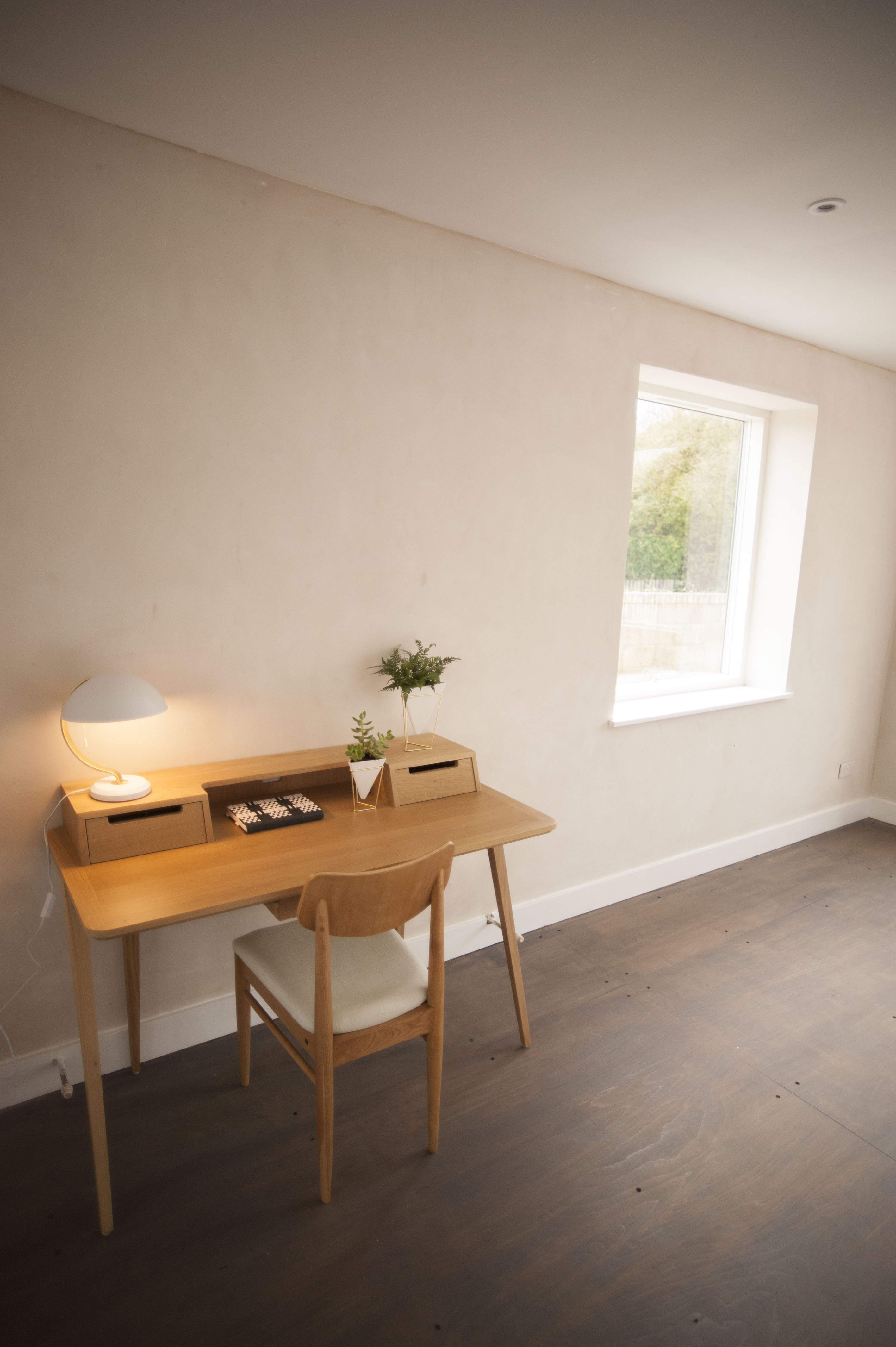Lime plaster: Why this eco-friendly building material is a top choice for home building
An architect shares the benefits of using eco-friendly lime plaster as a home building material


Looking for eco-friendly building materials for your home? Lime plaster should be a top contender.
Lime is one of the oldest building materials in the world. It is produced by heating limestone in a kiln, leaving only calcium oxide, known as quicklime. When quicklime is combined with sand and water, lime mortar is produced. Until the 1930s, lime had no real competition in the building industry as Portland cement was not invented until the early 1820s and did not become popular until the end of that century, and its rapid increase in use coinciding with the American building boom.
Today, Portland cement completely dominates the building industry. But, the manufacture of cement accounts for 8 percent of human global CO2 emissions. When compared to the aviation industry, that makes up only 2 percent of CO2 emissions, you can see the huge ongoing environmental cost. In contrast, lime production is considered carbon neutral as the carbon dioxide emitted during the creation of quicklime is reabsorbed by lime mortar and render over the years as it chemically converts back into limestone, thus also getting stronger as it ages. Where breathable, white lime-based plaster is used internally rather than the common and completely inert pink gypsum plaster, lime plaster naturally absorbs ambient moisture and thus helps to solve damp and mould problems.
The history of lime plaster

Lime plaster in the author's home
Given both the lineage and environmental benefits of lime, it's not a widely used building material, save for high-end heritage projects. Oftentimes, if I specify lime render or plaster on site, I am met with a reaction as if I have suggested using toothpaste.
But let us go back in time a little. Until the turn of the 19th Century, lime was so commonly used, that all large homes and estates had their own personal lime pit and mix and colour that was unique to them. When used internally and externally as lime render, it was mixed with organic matter such as horsehair to increase its longevity and durability. In Britain, different areas of the country included different ingredients into the composition leading to regional colour traditions. In Cornwall for example, the inclusion of pig’s blood increased the stickiness in the lime render and gives the typical pink house colour associated with the South West that perpetuates today.
- Keep reading: Home renovation-An expert guide
The benefits of lime plaster
One of the top benefits of lime plaster, of course, is it environmental impact (or lack thereof). Because it absorbs carbon, it can eventually become carbon neutral.
There are other benefits, too. Lime render and mortar is vapour permeable. It allows the building to breathe. It is softer than cement and therefore allows natural movement and does not damage the fabric of the building. When Portland cement replaced lime, it was considered a wonder material. It was incredibly strong and hard and crucially, it set rapidly. However, cement does not breathe. It does the opposite of lime render and due to its hardness, when it cracks and degrades, any water getting in has no escape and therefore it starts to soak the building underneath, pushes apart the static render from the stone or brick wall underneath allowing rot to set in.
Get small space home decor ideas, celeb inspiration, DIY tips and more, straight to your inbox!
Famous examples such as Charles Rennie Mackintosh’s Hill House in Helensburgh, completed in 1904 used Portland cement render. At that time was it applauded as a radical and modern alternative to lime. In fact, the water ingress has been so bad, that actual fabric of Hill House is rotting away inside the impermeable cement render. Currently, a ten-year long conversation programme is underway to save this beautiful piece of architecture. If traditional lime render was used at the time, this would not be the case. Ironically, old fashioned lime render works the same way as modern day Gortex does, waterproof yet permeable. Cement render is like a wearing a cheap, PVC coat; it gets pretty sweaty and uncomfortable in a matter of minutes.
- Keep reading: How to renovate a Victorian home
Lime plaster durability
Today, the usability of lime has come on in leaps and bounds. With the addition of small amounts of cement, lime mortar, render and lime-based alternatives to concrete such as hempcrete, now set more quickly and are more robust. Yet still, such innovations are regularly discounted by the general builder as an expensive, unknown quantity and by lime purists as sacrilege.
Like with many ancient techniques, the varied benefits of lime are discounted for the ease and speed of cement, despite its huge environmental toll. As an architect, I am a huge advocate of lime and am working towards the day that it becomes more common place on the building site.
Laura studied in Glasgow at the Mackintosh School of Architecture and also the Liverpool School of Architecture, qualifying in 2007. Working on site and getting hands on with building has always been extremely important After leaving University, she worked with a construction company for several months prior to starting as an architectural assistant with Guy Greenfield Architects in London. “Working on the tools and getting a basic idea of what site work entailed, gave me a really good foundation for developing detailing, site visits and working closely with the construction team. I think working on site is really important for anyone wanting to become an Architect, especially female Architecture trainees.”
Laura set up her own practice, Lamp Architects, ten years ago and her passion lies in innovative house designs, small scale redevelopment and micro-regeneration of long abandoned and brown field sites. After featuring in the first episode of George Clarkes Amazing Spaces on Channel 4 with the derelict underground public toilet conversion into a flat, she has appeared as an architect on two series of Ugly House to Lovely House, a judge on Shed of the Year for 4 series and is currently one of the architects on BBC2 Your Home Made Perfect with Angela Scanlon.
Laura is also currently renovating an old derelict Georgian House outside Glasgow and builds and designs her own furniture and interiors in association with Universal Cloud Cover.
